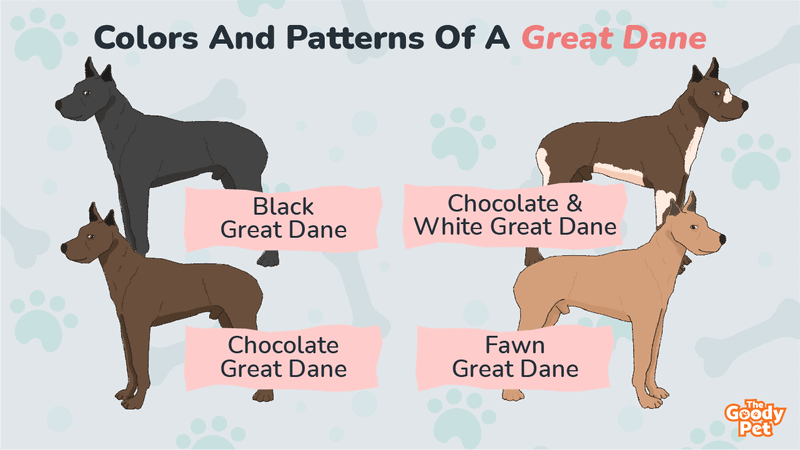At 32 to 35 inches and 110 to 180 lbs, Great Danes are easily among the largest of all dog breeds. Despite their intimidating build, these dogs have very sweet personalities which earn them the title of “gentle giants”.
Great Danes are commonly known to be brown or fawn, but Great Danes can also come in chocolate and white colors, as well as brindle and double merle coat patterns. Some of Great Dane’s patterns are beautiful that they even have an exclusive nickname, like the Harlequin Great Dane.
Here are all the 9 different color combinations and 10 patterns we can gather for a Great Dane.
19. Black Great Dane
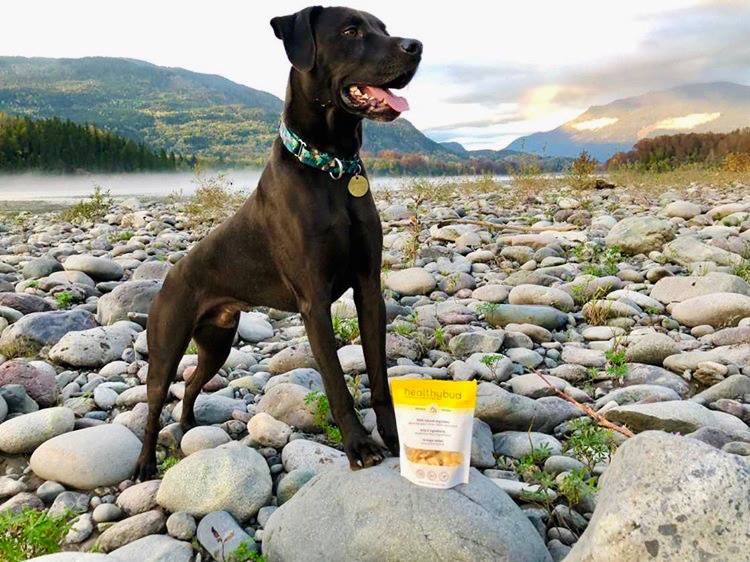
Black Great Danes have shiny, all-black coats which make them among the most beautiful of all variations of this dog breed. A distinguishing feature with Black Great Danes is that they shouldn’t have any other color patches on their coat.
The genes responsible for all-black coats in Great Danes are recessive. This means that two Black Great Danes or carriers of the genes have to be selectively bred together to produce this rare and beautiful gem.
18. White Great Dane
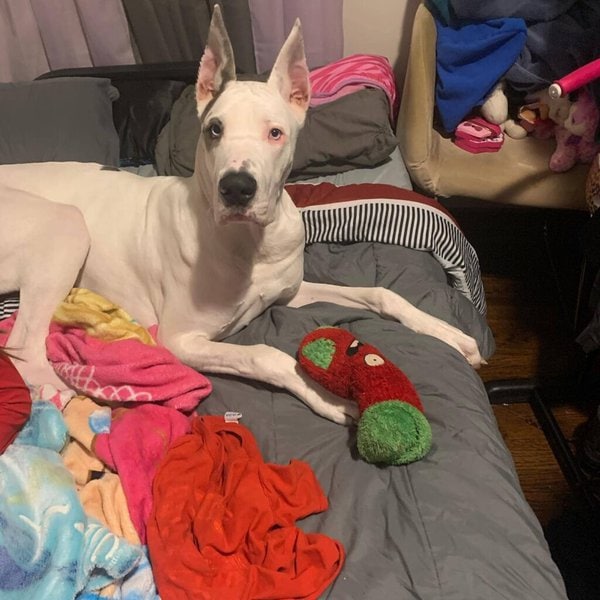
First thing’s first, it is important to understand that not all Great Danes with white coats are Albinos as is so often the misconception.
White Great Danes are actually developed from breeding between two Merle Great Danes or two harlequin Great Danes. The result is a dog with white fur and pigment on other areas including a dark nose.
Unfortunately, the genes responsible for the white coloration are sometimes associated with hearing and sight problems. However, not all White Great Danes are blind or deaf.
17. Blue Great Dane
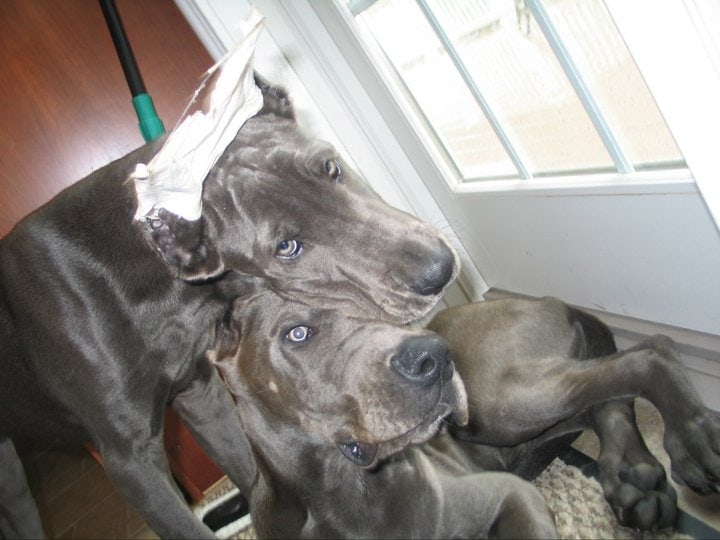
Blue Great Danes are also known as the Blue Apollos of Dogs. Their coats are a watered down version of black which gives them a dark, grayish-blue hue. They also have more of a powdery finish to them than the shiny aesthetic in solid-colored Great Danes.
As with all-black Great Danes, Blue Great Danes have the watered down black all over the body with no markings. The inheritance of this trait also follows a recessive pattern which is why the Blue variety is so rare.
16. Silver Great Dane
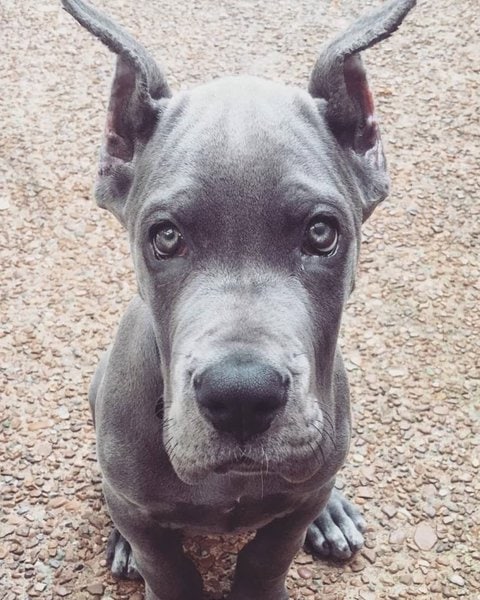
Technically speaking, the Silver Great Dane is a variation of the Blue Great Dane. Both varieties get their aesthetics from genes that cause watering down of black pigmentation.
What makes the Silver Great Dane different is that the watering down effect is much stronger which leads to a paler and lighter shade. This shade can be a shiny silver, dull gray, or even gray-ish white. It is not only a unique look but one that makes the Silver Great Danes very beautiful and mysterious.
15. Black & White Great Dane
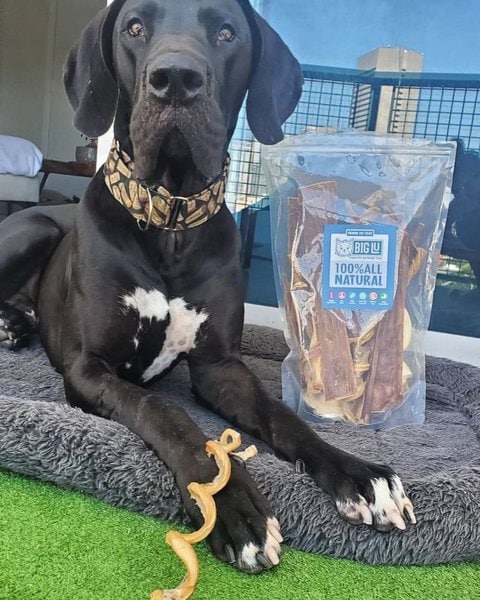
Black and white is a relatively common color combination in the Great Dane dog breed. It may occur in one of two patterns.
The first is a simple black coat with white patches mainly on the chest and paws. The black fur should cover most of the body.
Another way in which black and white coats manifest in Great Danes is through Harlequin markings with irregular black and white patches all over the body. We shall take a closer look at this pattern shortly.
14. Blue & White Great Dane
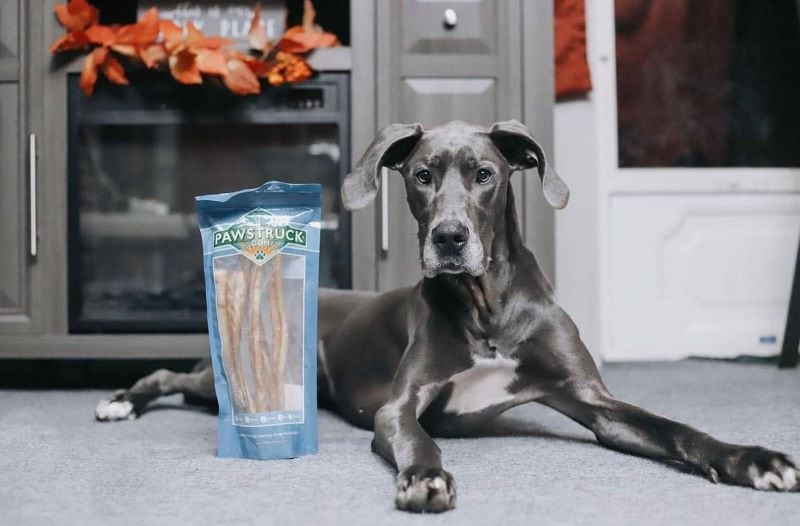
Blue and White Great Danes are pretty much like Black and White Great Danes only that the black fur is watered down and appears more like silver or gray-ish blue.
More often than not, the pattern with these Great Danes is the simple combination where blue fur covers most of the body and white occurs as patches mainly on the chest and paws.
Blue and White Great Danes are rare and a result of breeding between Great Danes with the blue coats or those carrying unexpressed genes for this watered-down coat variation.
13. Fawn Great Dane
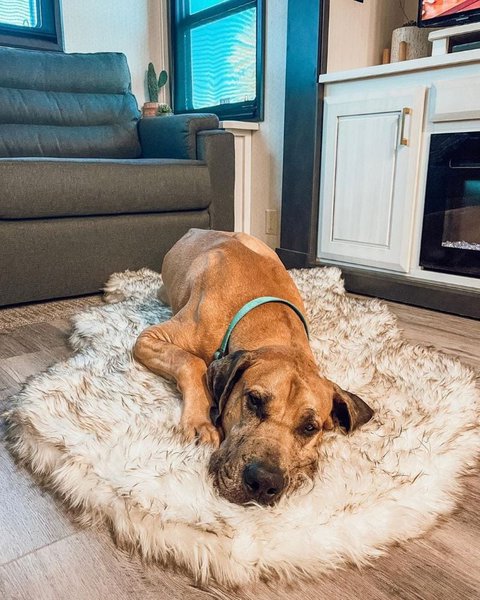
Fawn Great Danes are by far the most commonly found type of Great Danes out there. They are known for their beautiful, golden brown fur that covers most of the body.
These Fawn Great Danes also have a signature face marking with black fur around the eyes, on the nose bridge, as well as on the snout and jaw. This is what is known as the Great Dane black mask and occurs in different intensities and degrees of coverage.
12. Chocolate Great Dane
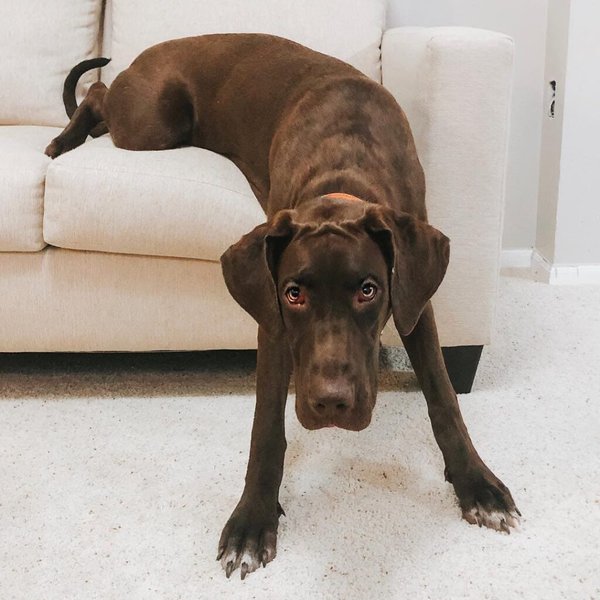
The Chocolate Great Dane is another mesmerizing beauty. Interestingly, it is not considered a standard variation and would be disqualified from most dog shows.
Chocolate Great Danes have reddish-brown coats. This coat type can range from dark hues that look a lot like rich chocolate to brighter hues that have more of a rusty reddish-brown look.
For a Great Dane to be considered a Chocolate type, there must be no other markings anywhere on their body.
11. Chocolate & White Great Dane
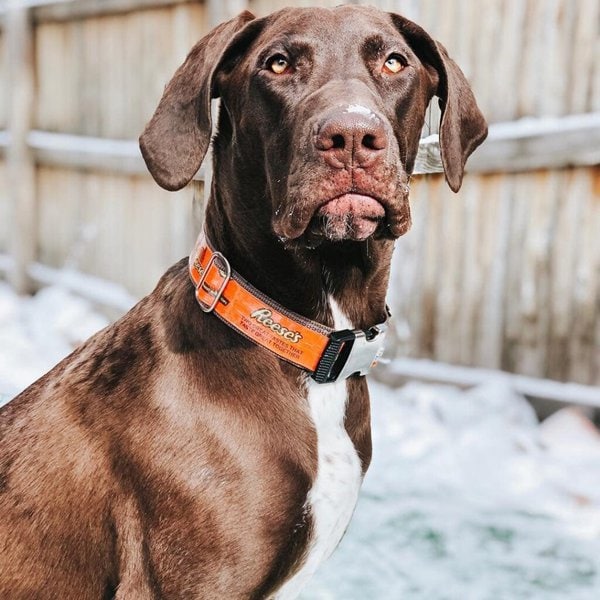
Chocolate and White Great Danes have predominantly chocolate-brown fur with white markings chest, limbs, and sometimes on the face, lower abdomen. They usually have brown eyes but may have bright, hazel, or yellow eyes.
Contrary to popular misconception, Chocolate and White Great Danes are not some super rare, exotic variation. Granted, they are not as common as black or fawn Great Danes. However, they are common enough that you shouldn’t have to search too hard or pay too much for one.
10. Brindle Great Dane
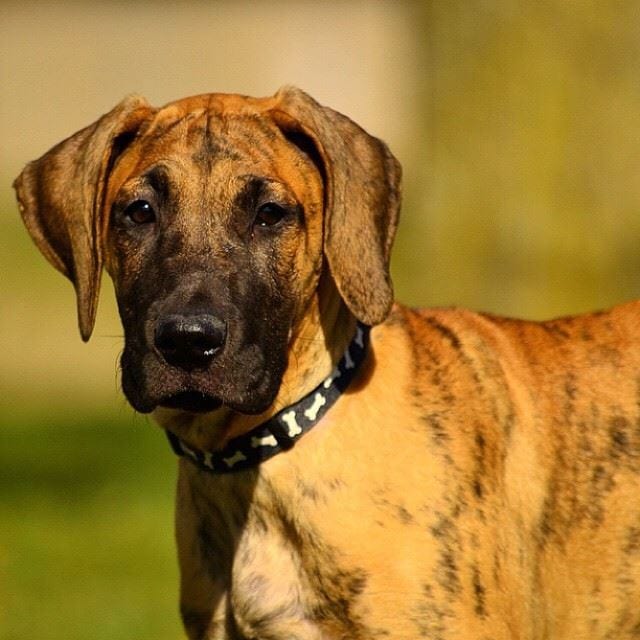
Brindle Great Danes have tiger stripe patterns to their coat. This is usually a combination of a light primary coat like fawn with dark stripes that are usually black. The stripes are all over the body and may be more distinct on some Great Danes than on others.
The unique Brindle Great Dane gets its coloring from the Brindle gene. Fortunately, this gene is not associated with any health or developmental issues.
9. Mantle Great Dane
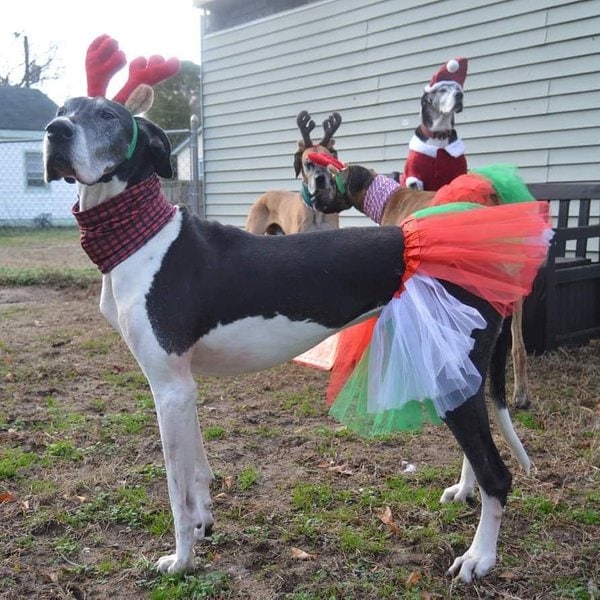
Mantle Great Danes have two coat colors. The first one is something dark like black or chocolate and appears mainly on the upper surfaces of the body. These include the back, tail, and top of the head.
The second color is always white and appears on lower parts like the chest and belly as a continuous patch. This white fur may also appear as small white patches on the face.
The mantle pattern commonly appears in Black and White Great Danes but may also appear in Blue and White or Chocolate and White variations.
8. Merle Great Dane
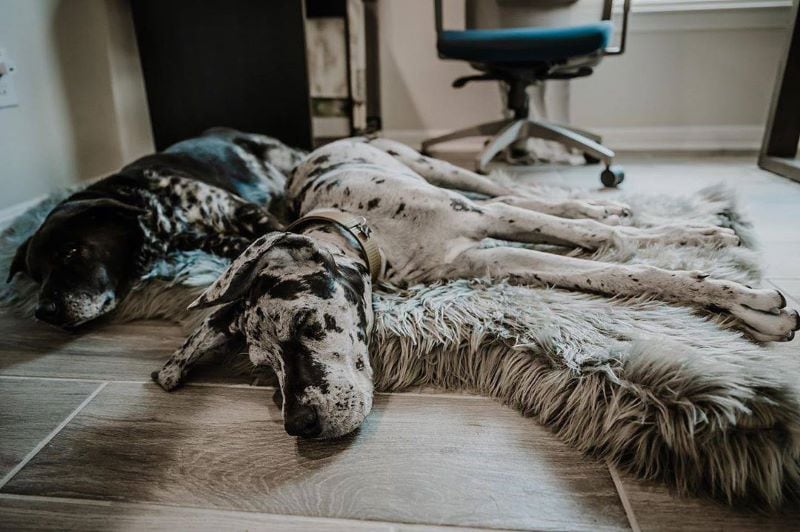
Merle Great Danes are very beautiful dogs. They have mottled patches of dark fur on pale white or gray undercoats. They may be fully Merle from two Merle Great Dales or they may be Merlequins where a Merle Great Dane is bred with a Harlequin.
The Merlequin is predominantly white which is the main difference.
Unfortunately, the beauty and mystique of Merle Great Danes come at a great price for the dog. The gene responsible for the trait is associated with eye and ear problems in some but not all Merle Great Danes.
7. White Markings
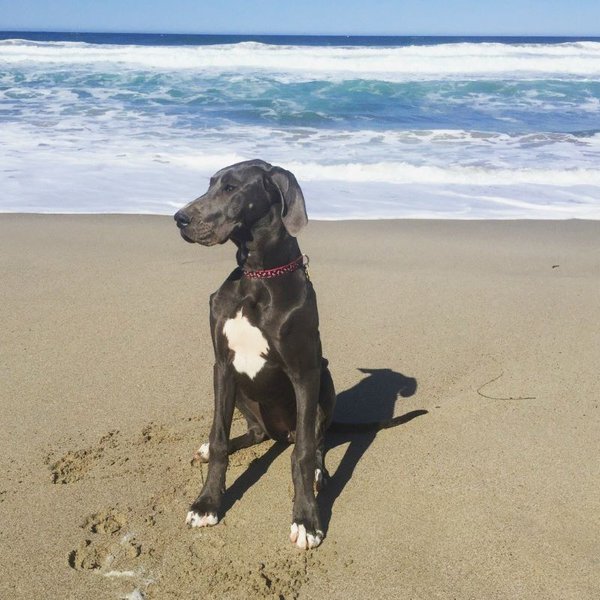
White-marked Great Danes are bi-color variations of the dog breed where the primary coat color is a dark color like blue, black, or chocolate. This dark color is found on most of the body as a continuous cover.
The white markings appear as patches restricted mainly to surfaces like the chest, belly, face, or paws. In some Great Danes, the white coat markings may appear as single, random patches within the dark coat section.
6. Piebald Great Dane
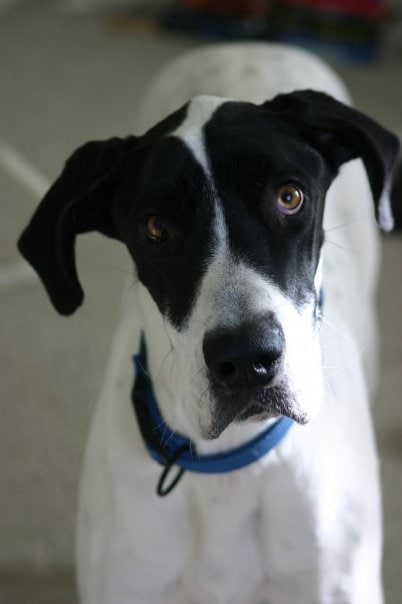
Piebald Great Danes are often confused for varieties with white markings. The main difference is that the Piebald gene results in a predominantly white coat. The white markings in these cases occur as large patches interrupt the darker color and cover a lot of space.
The best way to think about this is like black and white cow markings.
Piebald Great Danes are quite rare and are often bred selectively from other Great Danes with the same traits. However, they may also appear spontaneously within litters.
5. Merlequin Great Dane
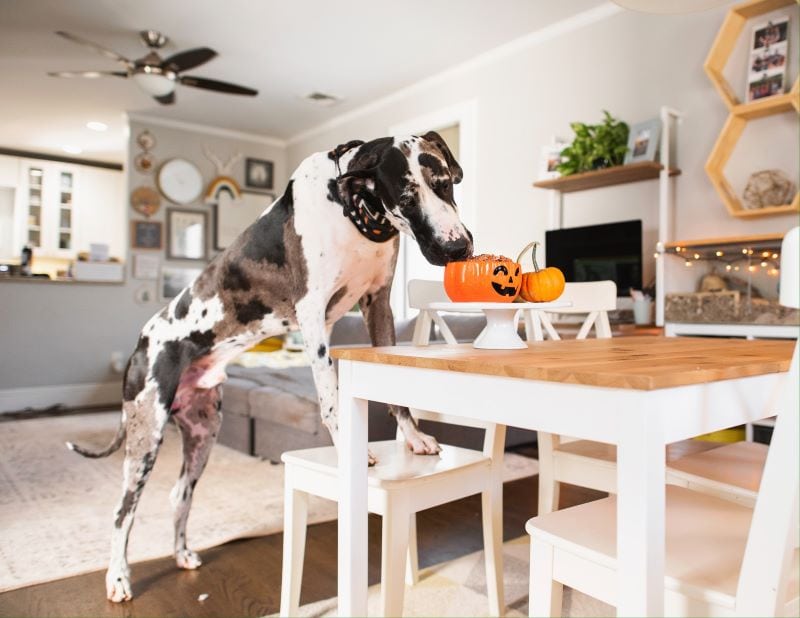
Merlequin Great Danes are non-standard variations known for their combination of mottled merle patches and the more distinct dark and white Harlequin markings.
The main color is white which appears randomly all over the body. The rest of the coat will have black and gray mottled markings.
Despite the unique aesthetic that Merlequin Great Danes have, they are considered undesirable and are often disqualified from standard dog shows. They are also likely to develop eye and ear problems.
4. Harlequin Great Dane
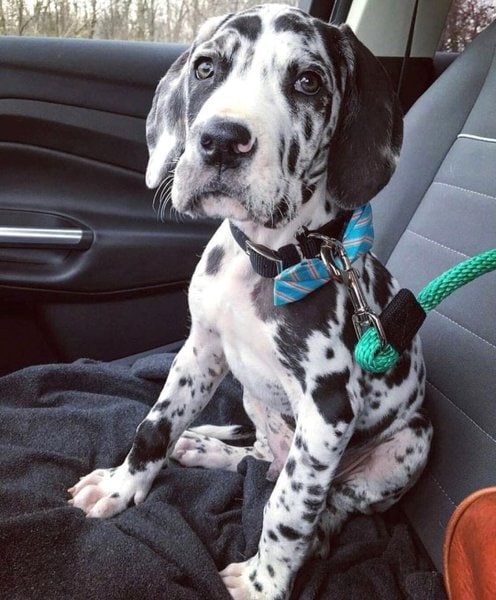
In order to get an idea of what to expect in terms of aesthetics from a Harlequin, you could make a comparison to the Dalmatian dog breed.
The coat is mainly white with solid black patches all over the body. They are different from Merlequin Great Danes as the non-white parts are of a single, solid color and not a mottle combination.
On the other hand, Harlequin Great Danes differ from Piebald varieties in that there are a lot more black patches all over the body in the Harlequin.
3. Fawnequin Great Dane
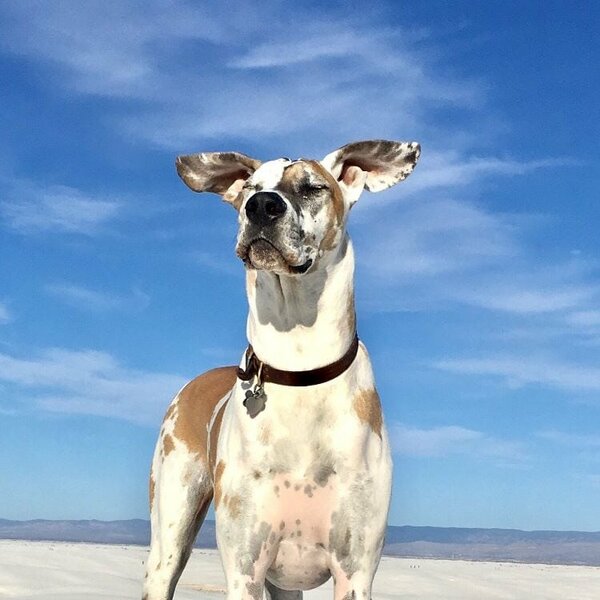
Fawnequin Great Danes are a type of Harlequin-marked Great Danes where the dark markings are fawn as opposed to black. The dark markings range in color from early brown tones to golden shades of brown.
These Fawnequin Great Danes are among the rarest of all the varieties based on color combination and patterns. Most dog breeders have to breed two Fawnequins selectively to get this beautiful trait. This may make them a bit more expensive but they are definitely worth it.
2. Double Merle Great Dane
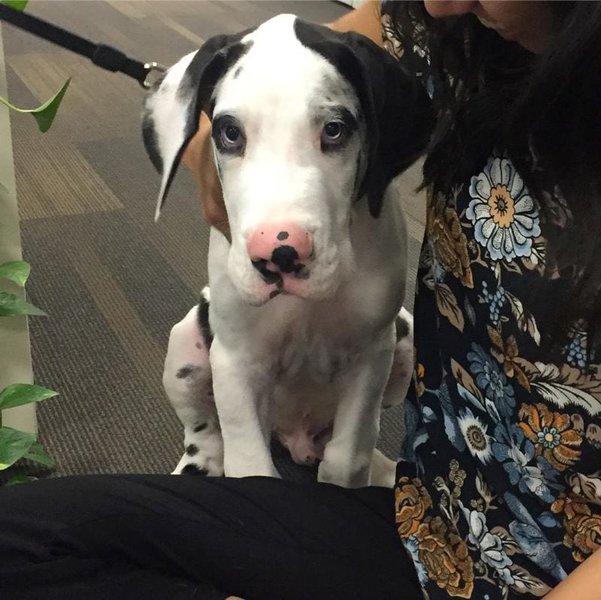
Double Merle, as the name suggests, are Great Danes developed by breeding to Merle Great Danes together. They usually have a combination of dark spots and white fur. The colors here are less mottled and the dark markings are far fewer than those on Merle Great Danes.
Unfortunately, the double dose of Merle genes also means an increased risk of associated health issues including deafness and blindness. As a result, breeding to produce Double Merle Great Danes is greatly discouraged.
1. Albino Great Dane
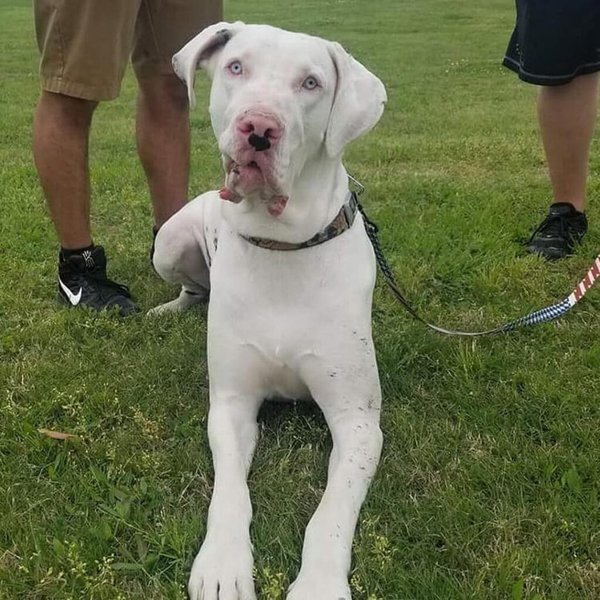
At first glance, you may have a hard time telling the Albino Great Dane from simple White Great Danes. One of the biggest differences is that Albino Great Danes often have pink noses and may have blue eyes.
These distinguishing traits are a result of albinism in the dog which prevents the formation of melanin all over the body including the nose, eyes, and paw pads. Albino Great Danes are prone to skin sensitivity, especially with prolonged sun exposure.
Related Questions
What Is The Rarest Great Dane Color? Silver is arguably the rarest color among Great Danes. It manifests as a result of genetic watering down of black fur which gives a bright, silver, or gray look. When it comes to patterns, Merle Great Danes are some of the rarest variations within this dog breed.
What Is The Most Popular Color Of Great Dane? Fawn is one of the most common and popular colors among Great Dane dogs. Other worthy contenders for that top honor include black, as well as black and white Great Danes. In addition to being beautiful and easily available, these colors are popular as they are not associated with any specific health conditions.
What Color Great Dane Is Scooby-Doo? Scooby-Doo is one of the most iconic Great Danes in pop culture and is Fawn in color. However, Scooby has black markings on the Fawn coat which is not actually a trait found within the Great Dane breed. This is just something else that makes Scooby stand out among his fellow Great Danes, in addition to his ability to speak, make sandwiches, and solve mysteries.

